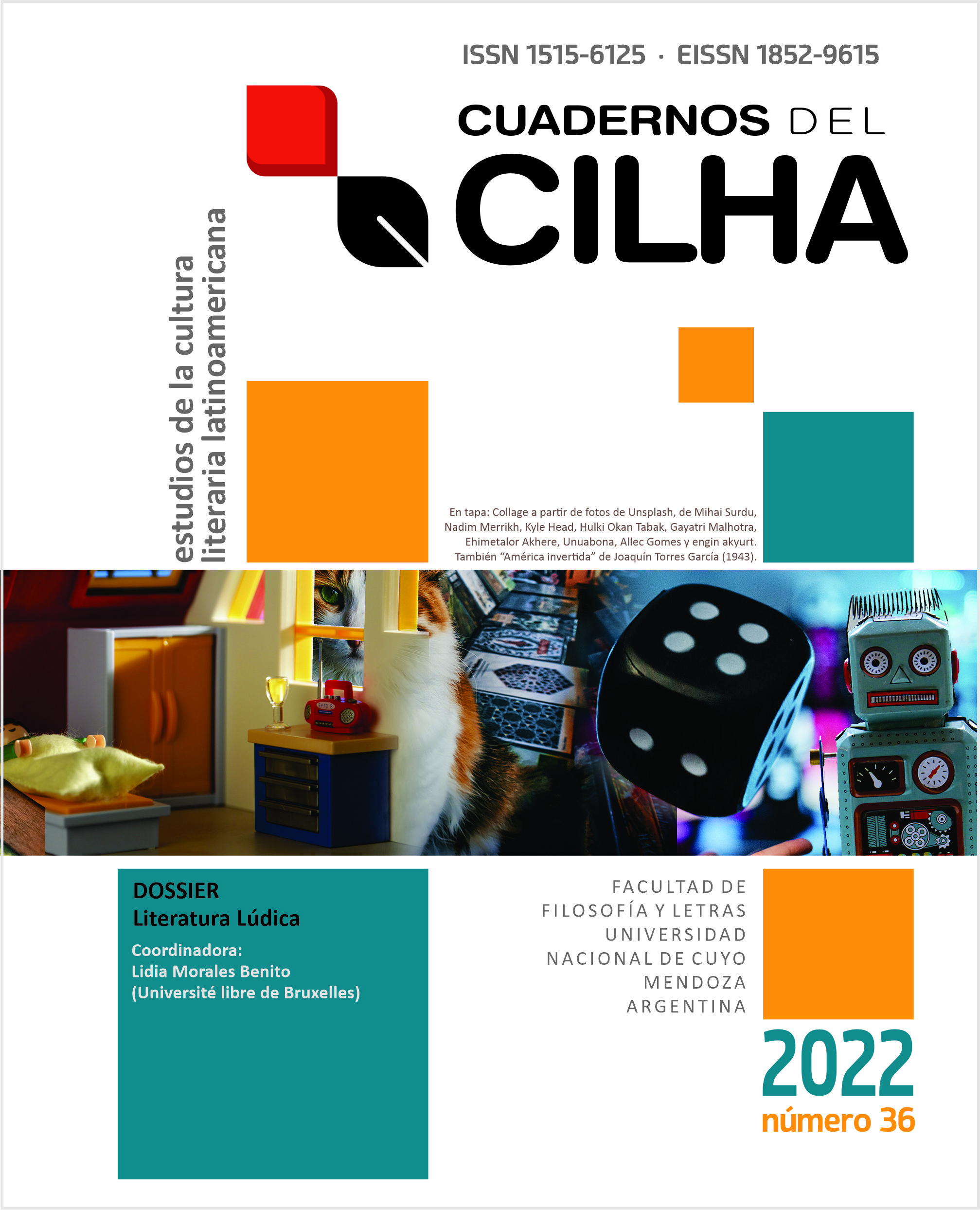Juégame un cuento: la reescritura lúdica de Caperucita roja en Gabriela Mistral, Ema Wolf y Giovanna Rivero.
DOI:
https://doi.org/10.48162/rev.34.042Palabras clave:
Literatura lúdica, Reescritura, Mistral, Wolf, RiveroResumen
El cuento tradicional se puede asimilar, por sus características innatas, al juego reglado o estructurado. Por ello, la reescritura de estos cuentos supone un nivel lúdico más, en el que el autor propone al lector una serie de indicios para hallar la relación entre su texto y el cuento al que referencia. El análisis de tres reescrituras de Caperucita roja, escritas por tres autoras hispanoamericanas, arroja luz sobre las diversas estrategias de reescritura que pueden utilizarse, y sobre todo sobre cómo las referencias intertextuales en estos cuentos crean una profundidad de significado que permite que el texto interactúe con el lector y, a través de su interpretación, con su sociedad contemporánea, realizando de esta un comentario crítico y feminista.
Citas
Bajtin, M. (1982). Estética de la creación verbal. Siglo XXI.
Casals Hill, A. (2020). Gabriela Mistral recrea a Caperucita, Blanca Nieve, Cenicienta y Bella Durmiente: una poética americanista y feminista basada en la ética del cuidado. Literatura y lingüística, 42, 173-195.
Delarue, P. (1951). Les contes merveilleux de Perrault et la tradition populaire. 1: Le petit Chaperon rouge. Bulletin folklorique de l’Ile de France, Nouvelle série, 23, 221-227, 251-260, 283-291.
Foust, R. E. (1986). The Rules of the Game: A Para-Theory of Literary Theories. South Central Review, 3(4), 5-14.
Grimm, J. y Grimm, W. (1879). Cuentos escogidos de los hermanos Grimm (J. S. de Viedma, trad.). Gaspar.
Huizinga, J. (1998). Homo Ludens. Alianza (Original publicado en 1938).
Jerolmack, C. (2009). Humans, Animals and Play: Theorizing Interaction When Intersubjectivity Is problematic. Sage Journals, 7(4), 371-389.
Kristeva, J. (1973). Semiótica. Fundamentos.
Ludmer, J. (1985). "Las tretas del débil". En P. E. González y E. Ortega (Eds.), La sartén por el mango: encuentro de escritoras latinoamericanas. Ediciones El Huracán.
Martínez-Bartolomé, M. (1999). Reírse, una cuestión de contrastes. Livius, 13, 117-136.
Mistral, G. (1979). Magisterio y Niño. Selección de prosas y prólogo de R. E. Scarpa. Editorial Andrés Bello.
Mistral, G. (2014). Caperucita roja. Paloma Valdivia (ilustradora). Diego Pun ediciones.
Mistral, G. (2015). Almacigo, poemas inéditos. Comp. L. Vargas Saavedra. Ediciones UC.
Morales Benito, L. (2013). El impulso lúdico: esencia y estructura del juego. Revista de estudios filológicos, 25.
Morales Benito, L. (2014). Pretexto para realidades posibles: taxonomía del juego literario. Iberic@l, 5, 89-101.
Noguerol Jiménez, F. (2006). Luisa Valenzuela: relatos integrados en el infierno de la escritura. En P. Brescia (ed.), El ojo en el
caleidoscopio (págs. 389-412). UNAM.
Perrault, C. (1984). Caperucita Roja. Ilustrado por S. Moon. Anaya.
Rivero, G. (2020). En el bosque en Para comerte mejor. Aristas Martínez Ediciones. (Original publicado en 2015).
Secreto, C. (2013). Caperucita y la reescritura posmoderna: el camino de la anagnórisis. Cuadernos del CILHA, 14(2), 67-84.
Wilson, R. R. (1990). In Palamedes’ shadow. Explorations in Play, Game, & Narrative Theory. Northeastern University Press.
Wolf, E. (2015). Pobre lobo en Filotea y otros cuentos. M. Trillo (ilustrador). Alfaguara.
Descargas
Publicado
Cómo citar
Número
Sección
Licencia
Derechos de autor 2022 Beatriz Velayos Amo

Esta obra está bajo una licencia internacional Creative Commons Atribución-NoComercial 4.0.












































